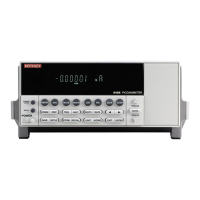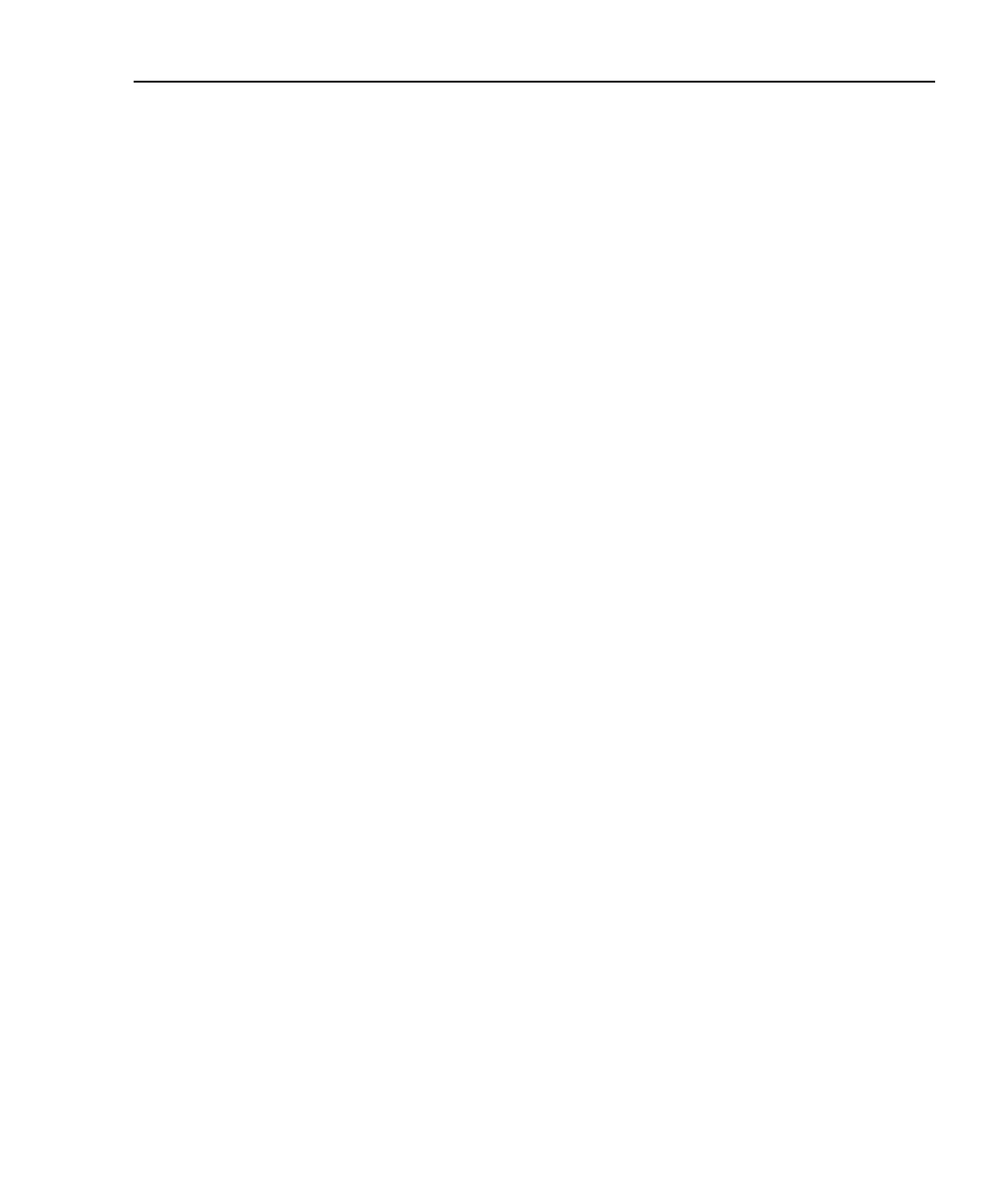Model 6485 Instruction Manual Performance Verification 15-5
Verification limits
The verification limits stated in this section have been calculated using only Model 6485
one-year accuracy specifications, and they do not include test equipment uncertainty. If a
particular measurement falls outside the allowable range, recalculate new limits based on
both Model 6485 specifications and corresponding test equipment specifications.
Example reading limits calculation
As an example of how verification limits are calculated, assume you are testing the 20mA
range using a 20mA input value. Using the Model 6485 20mA range accuracy specifica-
tion of ±(0.1% of reading + 1µA), the calculated reading limits are:
Reading limits = 20mA ± [(20mA × 0.1%) + 1µA]
= 20mA ± (0.02mA + 0.001mA)
= 20mA ± 0.021mA
= 19.979mA to 20.021mA
Calibrator voltage calculations
When verifying the 2nA-2µA current ranges, you must calculate the actual calibrator volt-
ages from the desired current values and the characterized Model 5156 Calibration Stan-
dard resistor values.
Calibrator voltages required for verification currents are calculated as follows:
V = IR
Where: V = required calibrator voltage
I = verification current
R = actual standard resistor value
For example, assume you are testing the 20nA range using an actual 100.5MΩ standard
resistor value. The actual calibrator voltage is: 20nA × 100.5MΩ = 2.01V.

